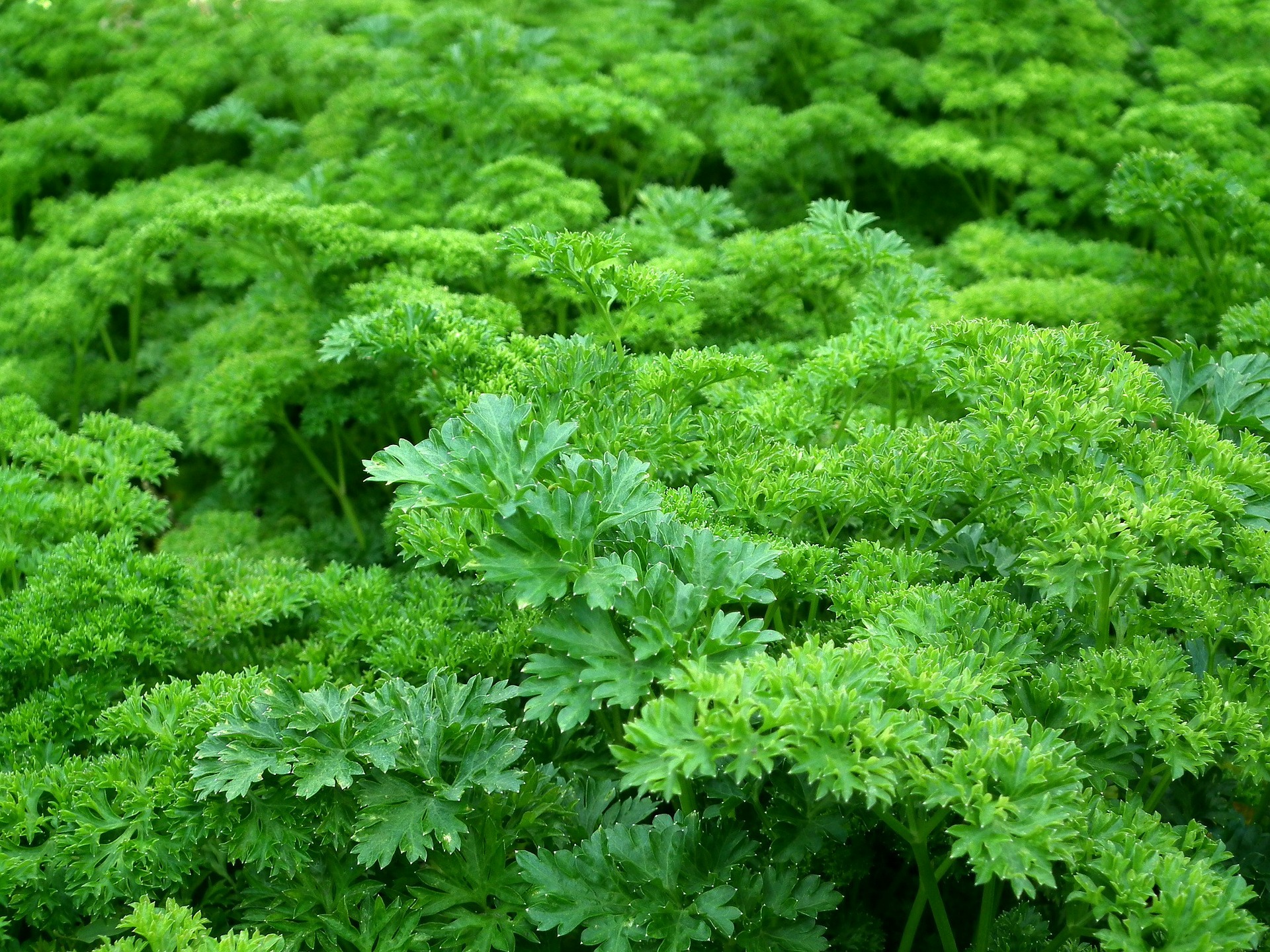Curly parsley versus flat leaf parsley: Which is better for cooking, and which for a garnish?
- Parsley: an herb, Pertoselinum crispum, native to the Mediterranean, having either curled leaf clusters (French parsley) or flat compound leaves (Italian parsley) widely cultivated for use in garnishing or seasoning food.
As we can see, parsley is divided into two distinct categories: French parsley and Italian parsley. Or, for the purposes of this post, curly parsley and flat leaf parsley, respectively.
First, a little on parsley in general.
Despite being labeled the most popular herb, many food enthusiasts have spoken up about parsley getting a bad name. These parsley pushers maintain that this special food item is more than a garnish, more than a seasoning.
In fact, if you consumed parsley like a vegetable it would be right up there with the other superfoods, broccoli and kale.

Indeed, parsley is a powerhouse of nutrients. In addition, it packs a rich and vigorous flavor – at least one type does, anyway.
Curly parsley:
- Is primarily used as garnish.
- Displays decorative, ruffled leaves.
- Has a bitter, grass-like flavor.
- Is less popular than its counterpart in America.
Although primarily used for ornamental purposes, Bon Appetite provides us with three different ways to use curly parsley.
Flat leaf parsley:
- Is better suited than curly for cooking.
- Consists of broad, somewhat jagged leaves.
- Has a rich, bold flavor.
- Is more popular than curly in this country.
When cooking with flat leaf parsley, it is recommended to add the leafy green to the dish towards the end – the heat can dilute the flavor.
SeriousEats.com suggests treating flat leaf parsley “like a seasoning – baked into meatballs, chopped into starches, or kneaded into bread dough – or even as a vegetable snipped into sandwiches, deep-fried and salted as a side dish, or dressed like salad leaves and mixed with toppings like fennel, nuts and seeds, or tomatoes.”
So there you go – lots of ideas to mix this powerhouse of healthfulness into your diet!
Although it would be safer to use flat leaf parsley over curly parsley if a dish doesn’t specify, you could certainly use one for the other in a pinch.
If you’re still unsure, try sampling as you go along to adjust the flavor. Or, consider what texture would work best with the dish.
Although the definition of parsley only lists two kinds, WHFoods.com announces that a third type has been discovered not too long ago: turnip-rooted (or Hamburg) parsley. Turnip-rooted parsley is cultivated for its roots.
And, if you’ve heard of Chinese parsley, that is not parsley at all – it’s cilantro.

Comments
2 responses to “Difference between: curly parsley and flat leaf parsley”
Interestingly enough, when shopping I always go for the curly parsley. Glad you set me on the straight and narrow because Jen goes for the flat leaf most of the time. And loves cilantro.
I will have to buy the flat leaf next time I shop. Just bought the curly leaf last night.
Thanks for all your VERY interesting tips.
Glad that helped out!